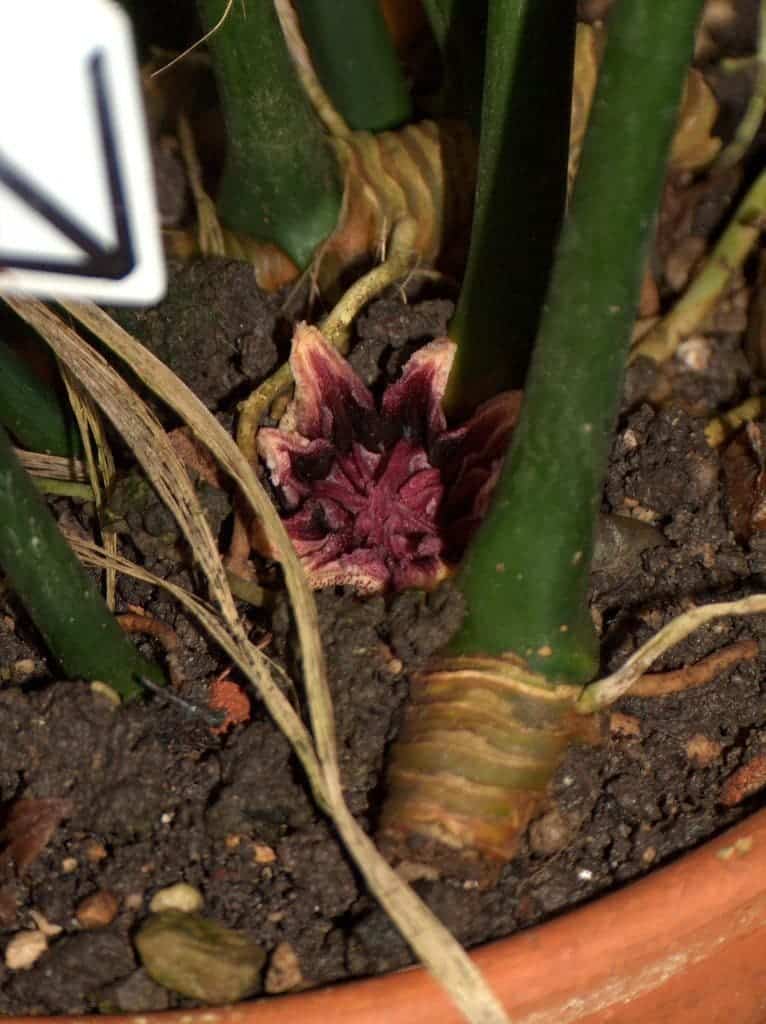The cast iron plant (Aspidistra elatior) is named for its ability to survive almost anything. Under-watering? Over-watering? No problem! It is low maintenance and great for novice gardeners, but it does grow rather slowly. For almost a century, it was believed to be the only plant in the world pollinated by a mollusk. More recently, tiny soil crustaceans were thought to be pollinators. To solve the mystery once and for all, Japanese scientists observed some of the plants in nature for the first time to find out what really pollinates these plants.
The cast iron plant’s flower is unusual, to begin with. It opens in the dirt and can be easily missed especially as it is often covered by leaf litter. It has a massive stigma, the female part of the plant, that covers almost the whole surface of the flower. The stamens, the male parts of the plants, contain sacs of pollen that are hidden under this massive stigma. Therefore a pollinator has to be very small to access the pollen. The flowers have a musty odor and it seems like they may be imitating a fungus.

The cast iron plant is native to Taiwan and Japan and oddly enough, had never been observed in nature for pollination. The researchers from Kobe University and Kyushu Research Centre watched the plant’s flowers on Kuroshima Island, South Japan, for 30 hours. They tagged 253 flowers to see how many of them were pollinated and produced a fruit. They saw five fungus gnats crawl under the stigma of separate flowers and came back out covered in pollen. The gnats land on the stigma first so any pollen attached to them gets deposited.
The gnats were all male, so they were not there to lay eggs. It seems as though they got tricked into thinking that the flower is a fungus (i.e. food!). The fungus gnat can’t eat the flower so it gets nothing out of going in, but the plant needs the gnats to reproduce. The rate of successful pollination for the cast iron plant is very low because the gnats learn that they won’t get anything from it. Only 12 of 253 flowers tagged ended up producing fruit.
A few other invertebrates visited the flowers; springtails and sand fleas also went in. They are so small that they could only carry a few grains of pollen at the most, making them non-important as pollinators. Interestingly, diaprid wasps also visited the flower; they are parasitoids that infect fungus gnat larvae with their parasitic offspring. Perhaps the wasps were looking for fungus gnats. Ants also crawled around the flower, but not often in the area with pollen making them unlikely pollinators.
There we go — a mystery solved by an unlikely candidate, a fungus gnat.
Journal reference: Suetsugu, Kenji, and Masahiro Sueyoshi. “Subterranean flowers of Aspidistra elatior are mainly pollinated by not terrestrial amphipods but fungus gnats.” Ecology 99, no. 1 (2018): 244-246.
Was this helpful?



